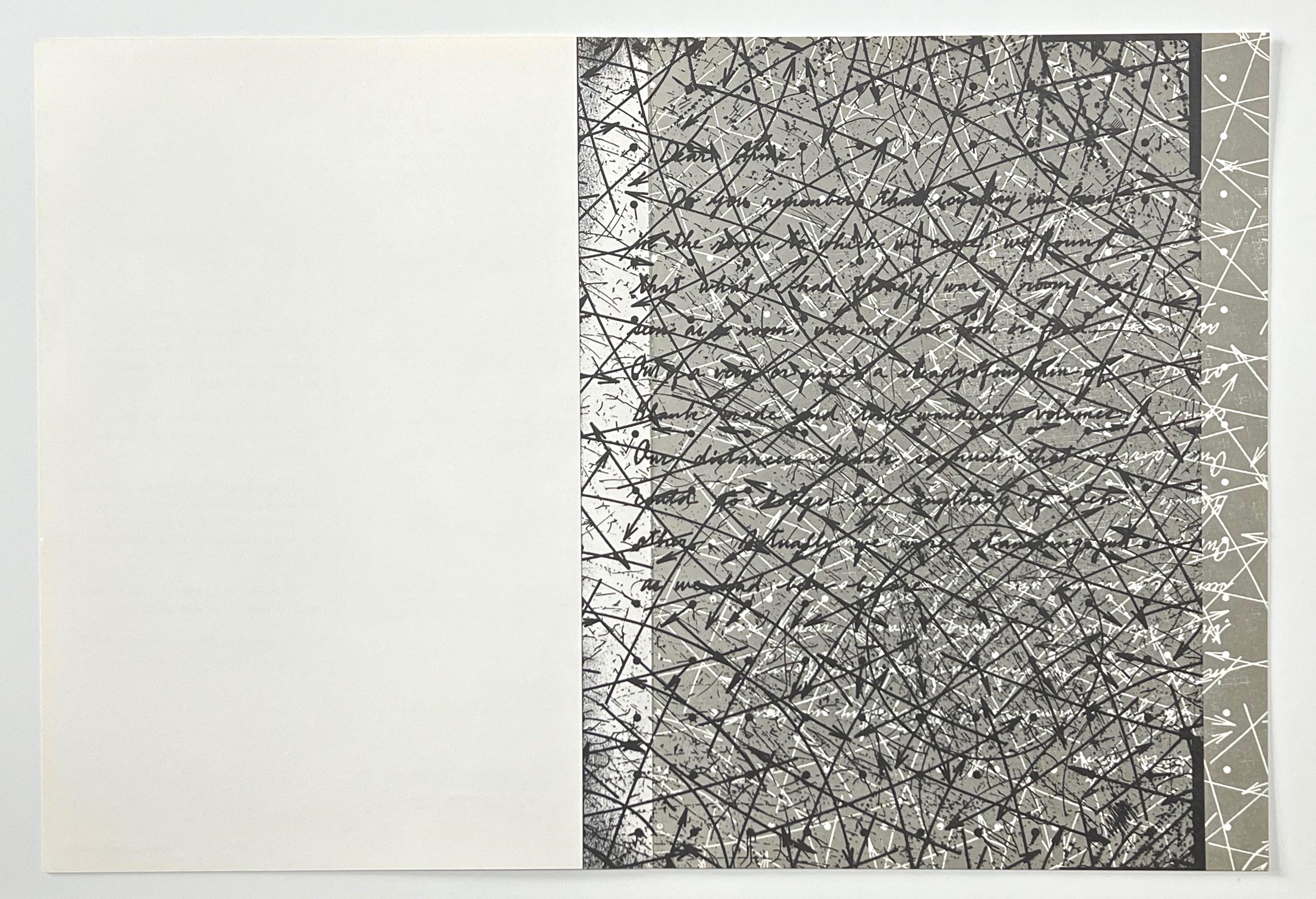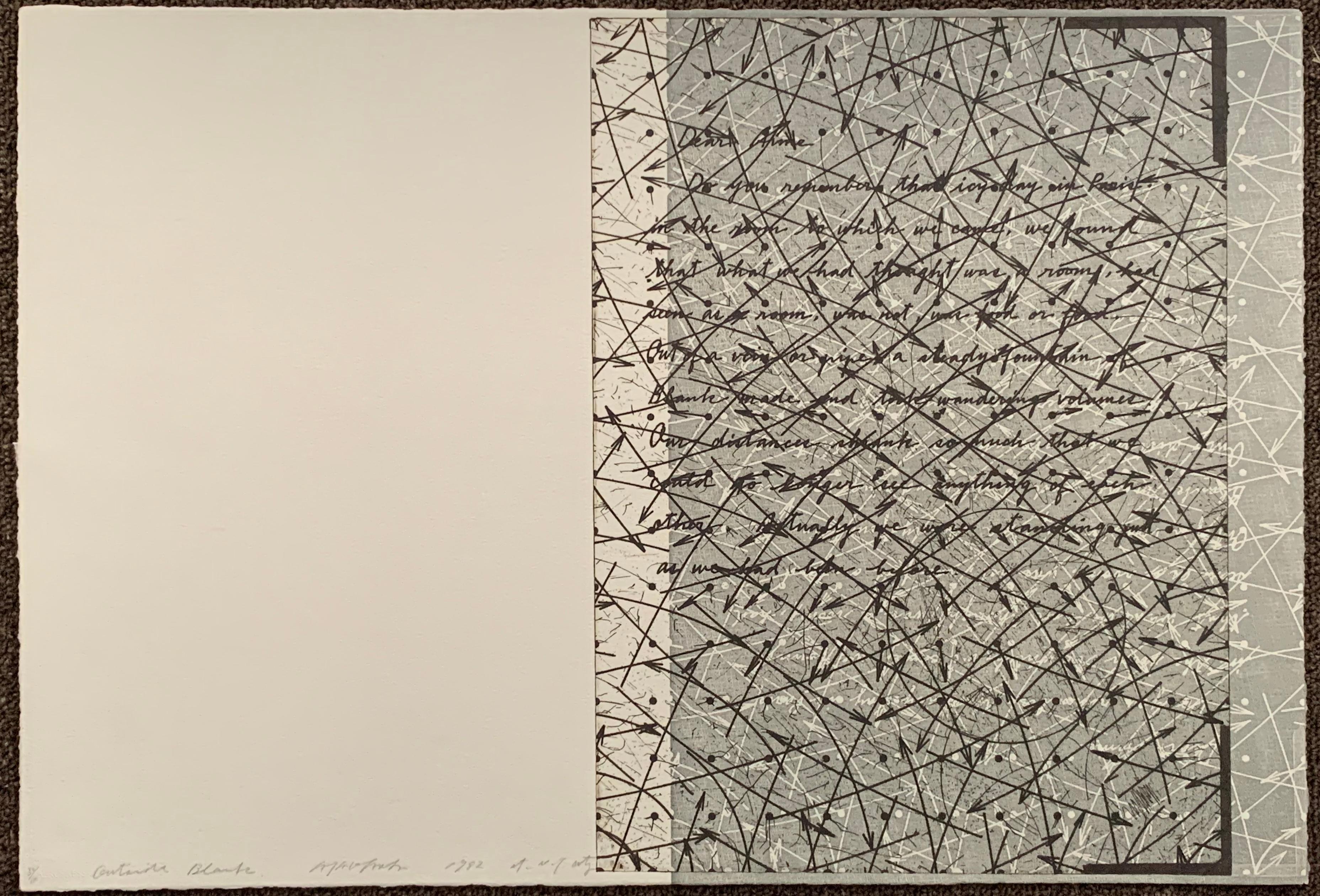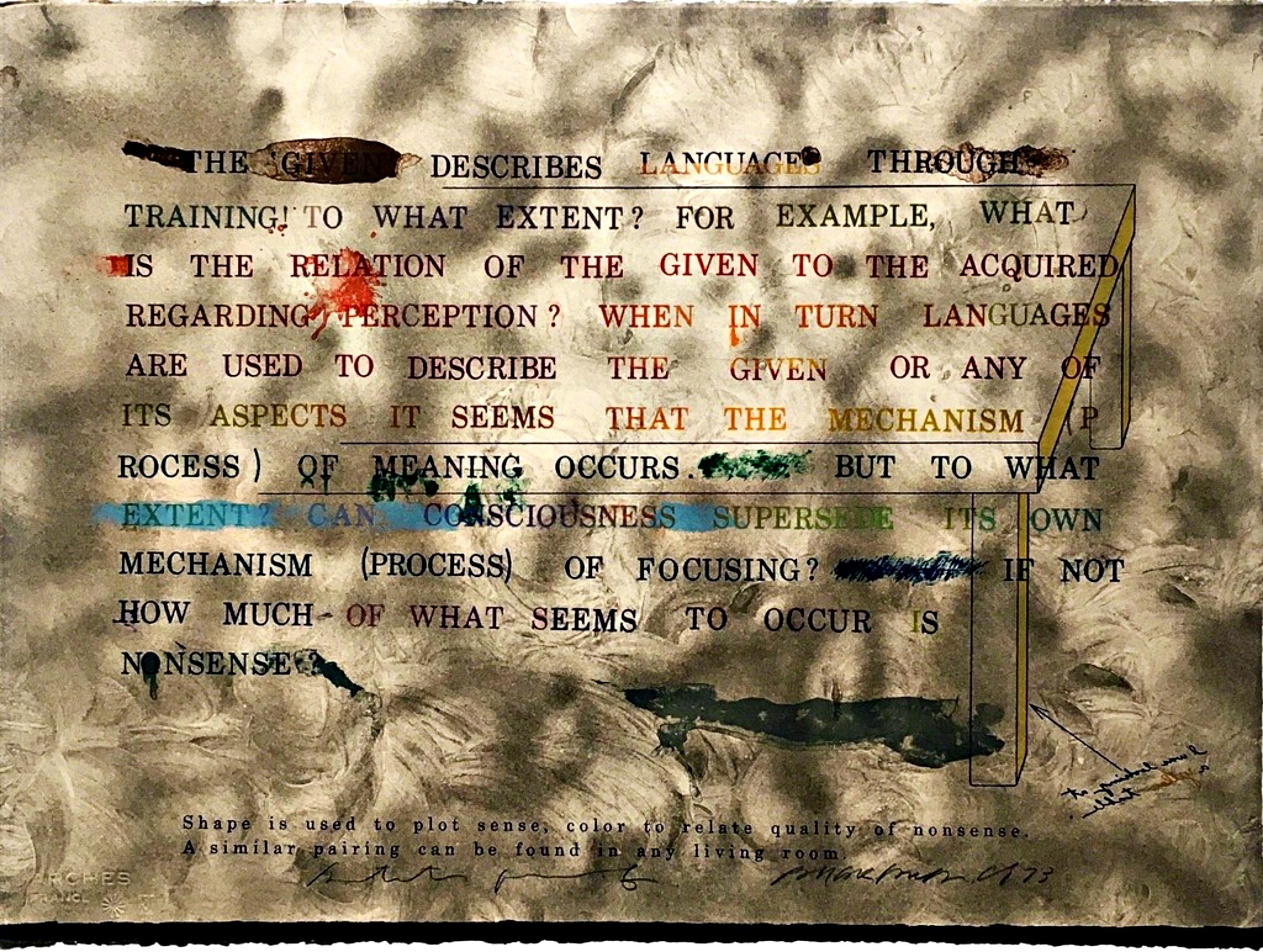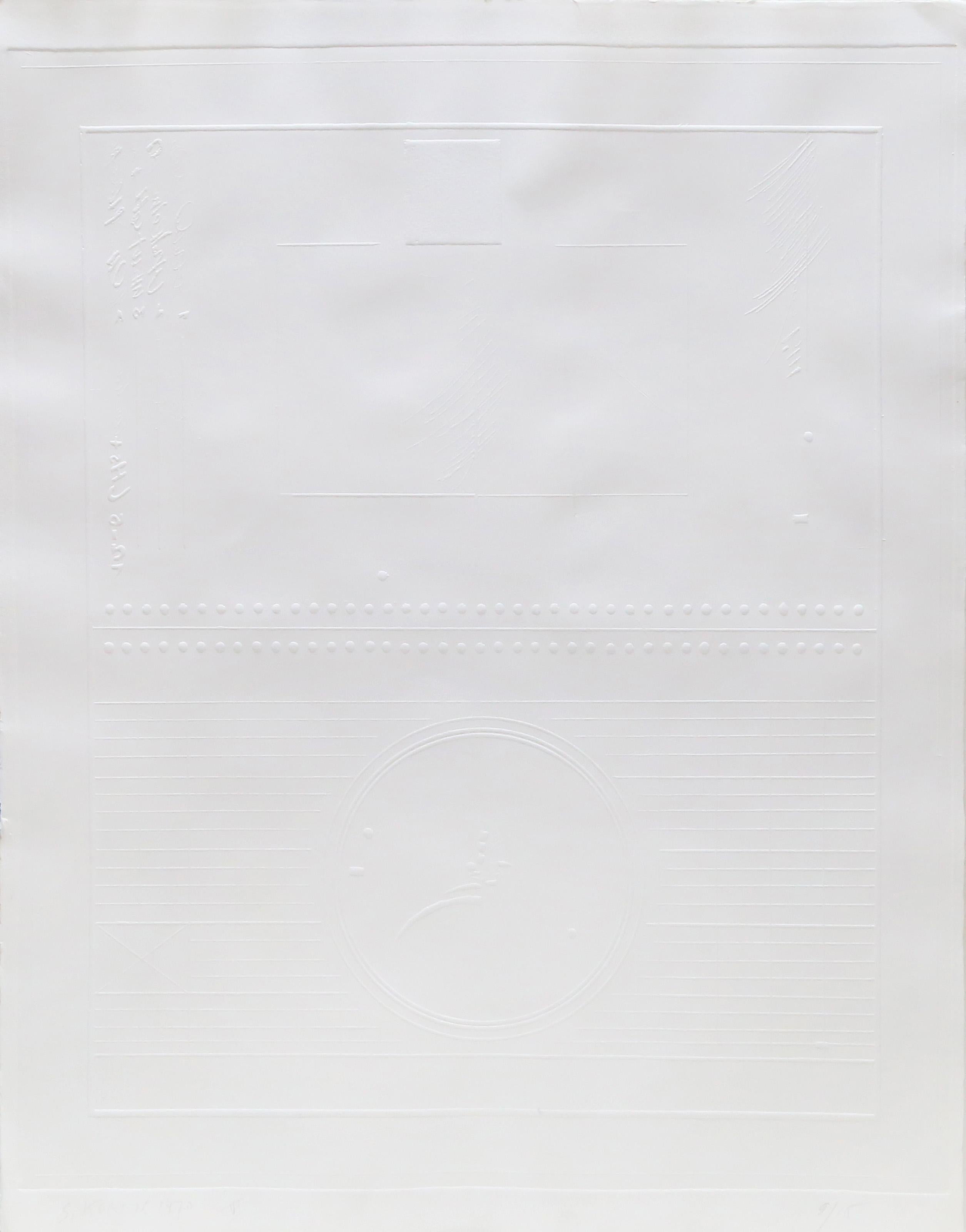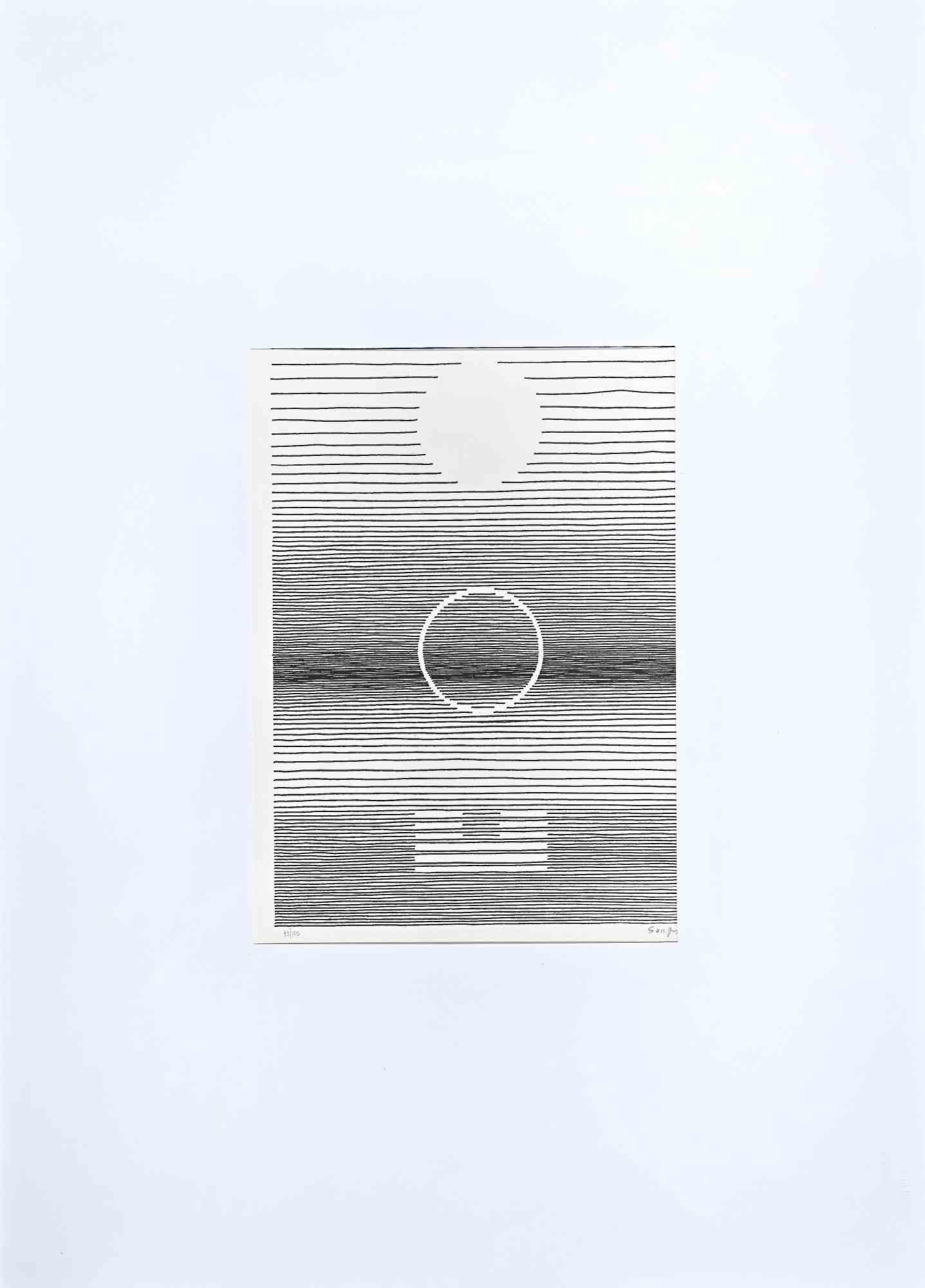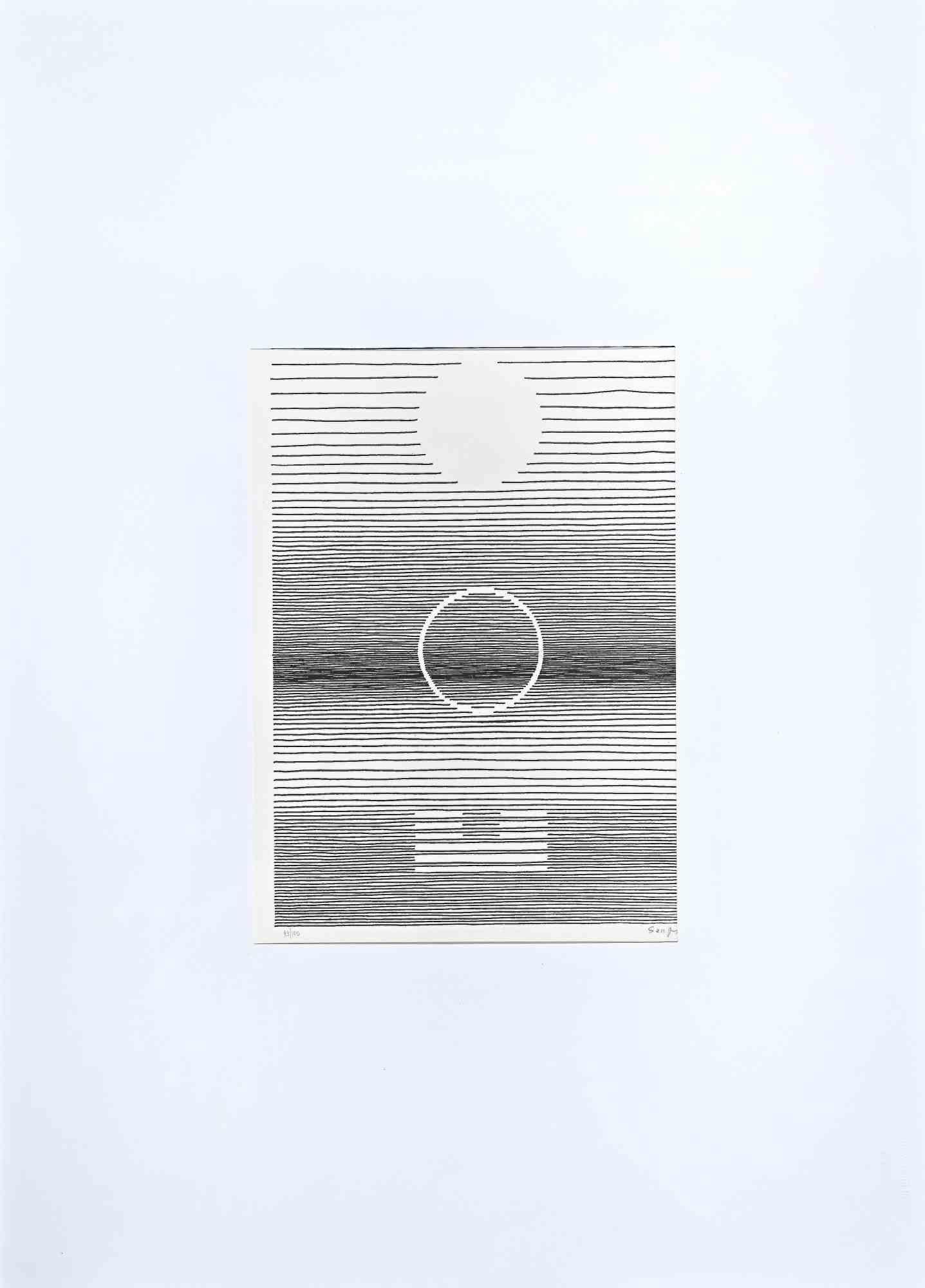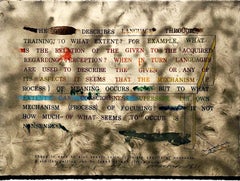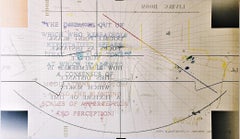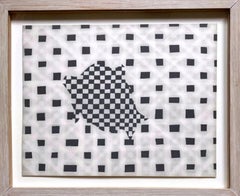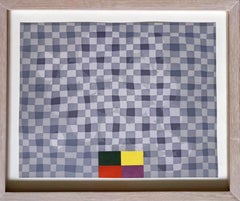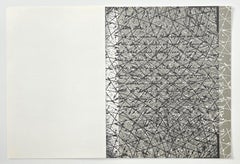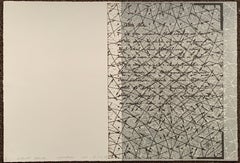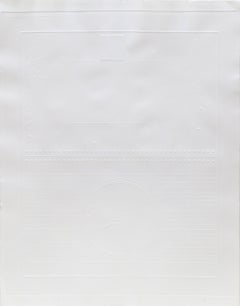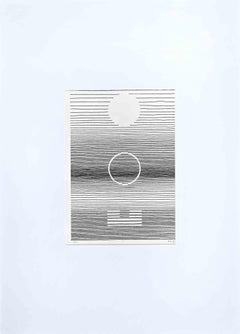Items Similar to Blankless Tone, lithograph & silkscreen with embossing & folded corner. Signed/N
Want more images or videos?
Request additional images or videos from the seller
1 of 10
Shusaku ArakawaBlankless Tone, lithograph & silkscreen with embossing & folded corner. Signed/N1979
1979
$2,500
£1,903.75
€2,173.96
CA$3,512.81
A$3,854.22
CHF 2,030.22
MX$45,850.02
NOK 26,006.85
SEK 23,747.81
DKK 16,241.57
About the Item
Shusaku Arakawa
Blankless Tone, 1979
Color lithograph and silkscreen with embossing on Arches paper with deckled edges and folded collage upper left
Hand-signed by artist, Titled "Blankless Tone", signed "Arakawa", inscribed "1979 at New York City", and numbered 26/35, with publishers' blind stamp.
29 × 48 inches
Unframed
Dramatic light gold horizontal mixed media graphic work, pencil signed. numbered and inscribed, with text lettering and corner collage element. The Estate of Shusaku Arakawa is represented by Gagosian Gallery. This work is classic Arakawa - an important example of his way of displacing sometimes cryptic words onto images as a form of artistic philosophy and performance.
Shusaku Arakawa (荒川 修作 Arakawa Shūsaku, July 6, 1936 – May 18, 2010) who spoke of himself as an “eternal outsider” and “abstractionist of the distant future,” first studied mathematics and medicine at the University of Tokyo, and art at the Musashino Art University. He was a member of Tokyo’s Neo-Dadaism Organizers, a precursor to The Neo-Dada movement. Arakawa’s early works were first displayed in the infamous Yomiuri Independent Exhibition, a watershed event for postwar Japanese avant-garde art. Arakawa arrived in New York in 1961 with fourteen dollars in his pocket and a telephone number for Marcel Duchamp, whom he phoned from the airport and over time formed a close friendship. He started using diagrams within his paintings as philosophical propositions. Jean-Francois Lyotard has said of Arakawa’s work that it “makes us think through the eyes,” and Hans-Georg Gadamer has described it as transforming “the usual constancies of orientation into a strange, enticing game—a game of continually thinking out.” Quoting Paul Celan, Gadamer also wrote of the work: "There are songs to sing beyond the human." Arthur Danto has found Arakawa to be “the most philosophical of contemporary artists." For his part, Arakawa has declared: “Painting is only an exercise, never more than that.” Arakawa and Madeline Gins are co-founders of the Reversible Destiny Foundation, an organization dedicated to the use of architecture to extend the human lifespan. They have co-authored books, including Reversible Destiny, which is the catalogue of their Guggenheim exhibition, Architectural Body (University of Alabama Press, 2002) and Making Dying Illegal (New York: Roof Books, 2006).
Shusaku Arakawa was seven years old when the onset of World War II led his family to place him in a Buddhist monastery for two years to protect him. The conditions he endured there produced persistent nightmares, however, in the hope that his fears could be alleviated, he was sent to live with a neighborhood doctor and his wife for three years after the war. Arakawa became interested in medicine as a teenager and worked as the doctor's assistant while studying drawing, painting, and science in high school.
From 1954 to 1958 Arakawa studied medicine, mathematics and art in Japan and staged several "happenings". In 1960 he was affiliated with a Neo-Dada group in Tokyo and also participated in a demonstration against the continued existence of American military bases in Japan. To escape the controversy in which he then found himself embroiled, Arakawa moved to New York in 1961, where he met John Cage, Marcel Duchamp, and writer/philosopher Madeline Gins, whom he married.
Arakawa and Gins began to collaborate on a prodigious project called The Mechanism of Meaning, which melds physics, metaphysics, phenomenology and epistomology into a visual art form. A part of this series, approximately one-hundred panels, featuring images, texts, and objects, was first shown at the Venice Biennale in 1970. By this time Arakawa was also involved in filmmaking. He wrote and directed Why Not: A Serenade of Eschatological Ecology (1969), and collaborated with Gins on For Example (1971). Both films were shown at the Whitney Museum of American Art, New York.
Titled "Blankless Tone", signed "Arakawa", inscribed "1979 at New York City", and numbered 26/35, with publishers' blind stamp.
Excellent condition; the fold on the upper left is part of the collage design. The work was framed so there is some tape residue on the back
- Creator:Shusaku Arakawa (1936 - 2010, Japanese)
- Creation Year:1979
- Dimensions:Height: 29 in (73.66 cm)Width: 48 in (121.92 cm)
- Medium:
- Movement & Style:
- Period:
- Condition:Excellent condition; the fold on the upper left is part of the collage design. The work was framed so there is some tape residue on the back.
- Gallery Location:New York, NY
- Reference Number:1stDibs: LU1745216655862
About the Seller
5.0
Gold Seller
Premium sellers maintaining a 4.3+ rating and 24-hour response times
Established in 2007
1stDibs seller since 2022
471 sales on 1stDibs
Typical response time: 1 hour
- ShippingRetrieving quote...Shipping from: New York, NY
- Return Policy
More From This Seller
View All"No!" Says the Signified" Silkscreen & Lithograph, Signed proof, Gagosian artist
By Shusaku Arakawa
Located in New York, NY
Shusaku Arakawa
Untitled 3 from "No!" Says the Signified, 1973
Lithograph and Silkscreen on Arches Paper with Deckled Edges
Hand signed and dated on the lower right front
Artist's Pr...
Category
1970s Abstract Abstract Prints
Materials
Lithograph, Screen
Double Point Blank, rare 1970s lithograph, signed/N, renowned conceptual artist
By Shusaku Arakawa
Located in New York, NY
Shusaku Arakawa
Double Point Blank, 1979
Lithograph on paper with deckled edges
Hand signed, numbered 13/45 and titled with publisher's and printer's blind stamp on lower front and p...
Category
1970s Abstract Abstract Prints
Materials
Lithograph
Untitled #2 Color etching, aquatint on Hahnemühle paper Signed/N ex-Deutsch Bank
By Thomas Nozkowski
Located in New York, NY
Thomas Nozkowski
Untitled #2, 2008
Color etching with aquatint on Hahnemühle paper
Signed and numbered 5/35 in graphite on the back. Die cut window flap on the back of the frame reve...
Category
Early 2000s Abstract Expressionist Abstract Prints
Materials
Etching, Aquatint
Rare etching with aquatint on Hahnemühle paper, Signed/N Framed ex Deutsche bank
By Thomas Nozkowski
Located in New York, NY
Thomas Nozkowski
Untitled #5, 2008
Color etching with aquatint on Hahnemühle paper
Signed, dated and numbered 5/35 in graphite pencil on the back. Bears original Deutsche Bank collec...
Category
Early 2000s Abstract Abstract Prints
Materials
Etching, Aquatint
Untitled #3, Color Abstract Expressionist Etching and Aquatint Signed/N Framed
By Thomas Nozkowski
Located in New York, NY
Thomas Nozkowski
Untitled #5, 2008
Color etching with aquatint on Hahnemühle paper
Signed, dated and numbered 5/35 in graphite pencil on the back. Bears original Deutsche Bank collec...
Category
Early 2000s Abstract Abstract Prints
Materials
Etching, Aquatint
Thou Shalt Not Take the Name of God in Vain (The 3rd Commandment) Signed/N print
Located in New York, NY
Gretchen Bender
Thou Shalt Not Take the Name of God in Vain (The Third Commandment), 1987
2 Color Lithograph and embossment on reflective mylar
Signed and numbered 37 from the limite...
Category
1980s Contemporary Abstract Prints
Materials
Mylar, Lithograph
You May Also Like
original lithograph
By Shusaku Arakawa
Located in Henderson, NV
Medium: original lithograph. Printed in 1982 for the art revue Derriere le Miroir (issue number 250), and published in Paris by Maeght. Image size: 15 x 12 1/4 inches (380 x 310 mm)....
Category
1980s Prints and Multiples
Materials
Lithograph
Outside Blank
By Shusaku Arakawa
Located in Henderson, NV
Arakawa made an impact on the New York art world during the 1980s.
Category
1980s Abstract Geometric Abstract Prints
Materials
Paper, Lithograph
$1,200 Sale Price
20% Off
Untitled VI, Conceptual Intaglio by Shlomo Koren
Located in Long Island City, NY
Shlomo Koren, German/Israeli (1932 - ) - Untitled VI, Year: 1970, Medium: Intaglio, signed and numbered in pencil, Edition: 15, Size: 26 x 20 in. (66.04 x 50.8 cm)
Category
1970s Conceptual Abstract Prints
Materials
Intaglio
Abstract Composition - Lithograph by Michel Seuphor - 1973
Located in Roma, IT
Abstract Composition is an Original Lithograph realized by Michel Seuphor in 1973.
Limited edition of 100 copies, editor "La Nuova Foglio SPA".
Very good condition on a white cardboard passpartout (70x50 cm).
Hand-signed and numbered by the artist with pencil on the lower margin.
Fernand Berckelaers (10 March 1901, in Borgerhout – 12 February 1999, in Paris), pseudonym Michel Seuphor (anagram of Orpheus), was a Belgian painter. Seuphor established a literary magazine, Het Overzicht, in Antwerp in 1921. He moved in Dutch, Belgian, and French avant-garde circles. He associated at various points with Theo van Doesburg and Piet Mondrian, and was influenced by their iconic Neo-plasticist works. Along with Joaquin Torres...
Category
1970s Abstract Abstract Prints
Materials
Lithograph
Abstract Composition - Lithograph by Michel Seuphor - 1973
Located in Roma, IT
Abstract Composition is a lithograph realized by Michel Seuphor in 1973.
Limited edition of 100 copies, editor "La Nuova Foglio SPA".
Very good condition on a white cardboard passpartout (70x50 cm).
Hand-signed and numbered by the artist with pencil on the lower margin.
Fernand Berckelaers (10 March 1901, in Borgerhout – 12 February 1999, in Paris), pseudonym Michel Seuphor (anagram of Orpheus), was a Belgian painter. Seuphor established a literary magazine, Het Overzicht, in Antwerp in 1921. He moved in Dutch, Belgian, and French avant-garde circles. He associated at various points with Theo van Doesburg...
Category
1970s Abstract Abstract Prints
Materials
Lithograph
Untitled VII, Conceptual Intaglio by Shlomo Koren
Located in Long Island City, NY
Shlomo Koren, German/Israeli (1932 - ) - Untitled VII, Year: 1970, Medium: Intaglio, signed and numbered in pencil, Edition: 15, Size: 26 x 20 in. (66.04 x 50.8 cm)
Category
1970s Conceptual Abstract Prints
Materials
Intaglio
More Ways To Browse
Dior 2002
Arthur Danto
1970 Calendar Print
Ai Weiwei Bomb
Akira Kurosaki
Albers Olympics
Albi Calder
Alexander Calder Fabric
Alexander Calder Spider
Alone Again Kaws
Amerigo Tot
André Lanskoy On Sale
Andre Masson Don Giovanni
Anna Helper
Antoni Tapies Galerie Maeght
Arthur Boden On Sale
Benedictus Variations
Bridget Riley Poster
